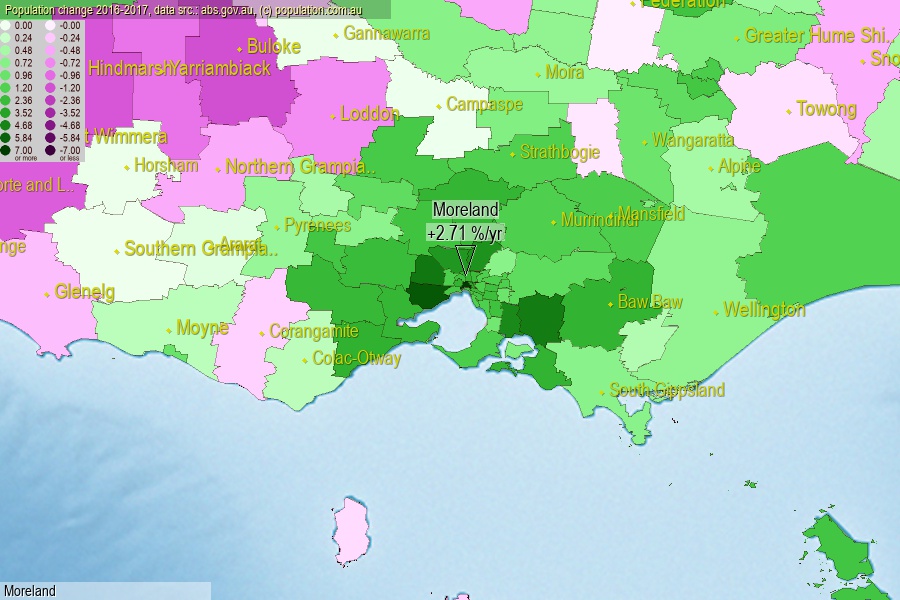 population.com.au
population.com.auLast official estimated population of Moreland City (as Local Government Area) was 176 971 people (on 2017-06-30)[2]. This was 0.71% of total Australian population and 2.752% of VIC population. Area of Moreland is 51.00 km², in this year population density was 3 470.02 p/km² . If population growth rate would be same as in period 2016-2017 (+2.71%/yr), Moreland population in 2025 would be 219 259. [0]



Click to enlarge. Moreland is located in the center of the images.
Population [people], population density [p./km²] and population change [%/year] [2]
[1996-2001] -0.18 %/Y
[2001-2002] +0.45 %/Y
[2002-2003] +0.35 %/Y
[2003-2004] +0.74 %/Y
[2004-2005] +0.96 %/Y
[2005-2006] +1.37 %/Y
[2006-2007] +2.00 %/Y
[2007-2008] +1.92 %/Y
[2008-2009] +2.50 %/Y
[2009-2010] +1.43 %/Y
[2010-2011] +1.30 %/Y
[2011-2012] +1.76 %/Y
[2012-2013] +2.11 %/Y
[2013-2014] +2.38 %/Y
[2014-2015] +2.30 %/Y
[2015-2016] +2.64 %/Y
[2016-2017] +2.71 %/Y
[0] Calculated with linear interpolation from officially estimated population
[1] Read more about LGA and Australian Statistical Geography Standard (ASGS) on abs.gov.au
[2] Population data from Australian Bureau of Statistics (Population and density: 2017; change: 2016-2017)
[3] Digital Boundaries: Australian Statistical Geography Standard (ASGS) 2016.